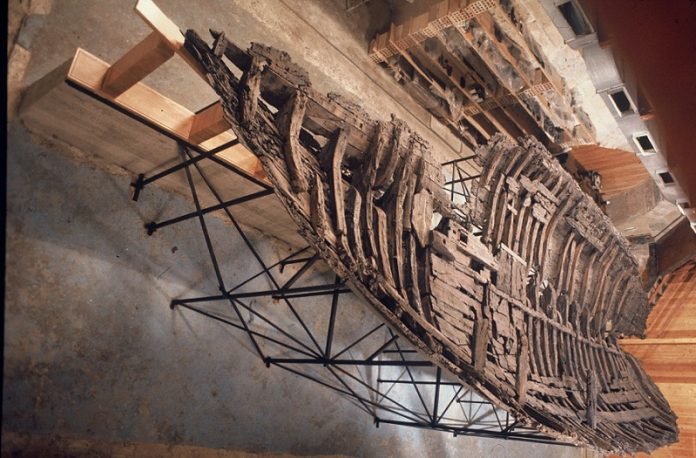
When we think of shipwrecks, we often imagine treasure chests full of gold and jewels lying at the bottom of the ocean.
But for Cornell researchers studying the famous Kyrenia shipwreck, the real treasure was thousands of almonds found in jars among the cargo.
Discovered off the north coast of Cyprus in the 1960s, the Kyrenia shipwreck dates back to the Hellenistic era.
Using the almonds, wood samples, and advanced dating techniques, researchers from the Cornell Tree-Ring Laboratory determined that the ship most likely sank between 296–271 BCE, with the highest probability being between 286–272 BCE.
The team’s paper, titled “A Revised Radiocarbon Calibration Curve 350–250 BCE Impacts High-Precision Dating of the Kyrenia Ship,” was published in PLoS ONE.
The lead author, Sturt Manning, is a Distinguished Professor of Classical Archaeology at Cornell University.
The Kyrenia shipwreck, found in 1965, is the first major Greek Hellenistic-period ship discovered with a largely intact hull. It was excavated from 1967 to 1969 along with its cargo, which included hundreds of ceramic vessels.
The ship and its artifacts have provided archaeologists and historians with valuable insights into ancient ship technology, construction practices, and maritime trade.
For decades, the exact date of the Kyrenia shipwreck has been uncertain. Initial efforts to date the ship were based on artifacts such as pottery and coins found onboard. These efforts suggested the ship was built and sank in the later 300s BCE.
However, Manning’s team wanted to secure a more precise date. The biggest challenge was the use of polyethylene glycol (PEG), a petroleum-based compound used to preserve waterlogged wood. PEG contamination made radiocarbon dating difficult.
To overcome this, Manning’s team collaborated with researchers at the University of Groningen in the Netherlands to develop a new method to clean PEG from wood.
They tested this method on Roman-era samples from Colchester, England, and successfully removed 99.9% of the PEG, making accurate radiocarbon dating possible.
The team applied this technique to a Kyrenia wood sample they had previously tried to date without success. They also dated a tiny piece of wood that had not been treated with PEG and had been preserved in water for over 50 years. These efforts revealed that the most recent tree rings from the timbers grew in the mid-to-late 4th century BCE.
Additionally, the researchers examined organic materials from the ship’s cargo, including almonds and a sheep or goat ankle bone used for ancient games and rituals. By combining these organic samples with wood samples and advanced statistical modeling, the team determined that the ship’s final voyage likely occurred between 305–271 BCE, with the most likely period being 286–272 BCE.
During their research, the team faced another challenge: the international radiocarbon calibration curve, which helps convert radiocarbon measurements into calendar dates, had gaps for the period between 350 and 250 BCE. This curve relied on older data from the 1980s and 1990s, which lacked modern accuracy.
Manning’s team re-calibrated the curve using known-age tree samples, including sequoia and oak. This helped clarify a significant spike in radiocarbon production around 360 BCE and improved the accuracy of dates around 300 BCE, which was crucial for dating the Kyrenia shipwreck.
The new findings not only clarify the timeline of the Kyrenia shipwreck and its cargo but also improve the radiocarbon calibration curve, benefiting researchers working on various projects worldwide.
“This revised curve for 400–250 BCE now has relevance to other research projects in Europe, China, and other parts of the northern hemisphere,” Manning said. “Half of the future citations of our paper will likely be for the revised radiocarbon calibration curve, and the other half for the improved dating of the Kyrenia shipwreck.”
Co-authors of the paper include researchers from the Oxford Dendrochronology Laboratory, the University of Groningen, and the University of California, Irvine. The Kyrenia shipwreck continues to provide valuable insights into ancient maritime history, and with these new techniques, its legacy will be better understood for years to come.



